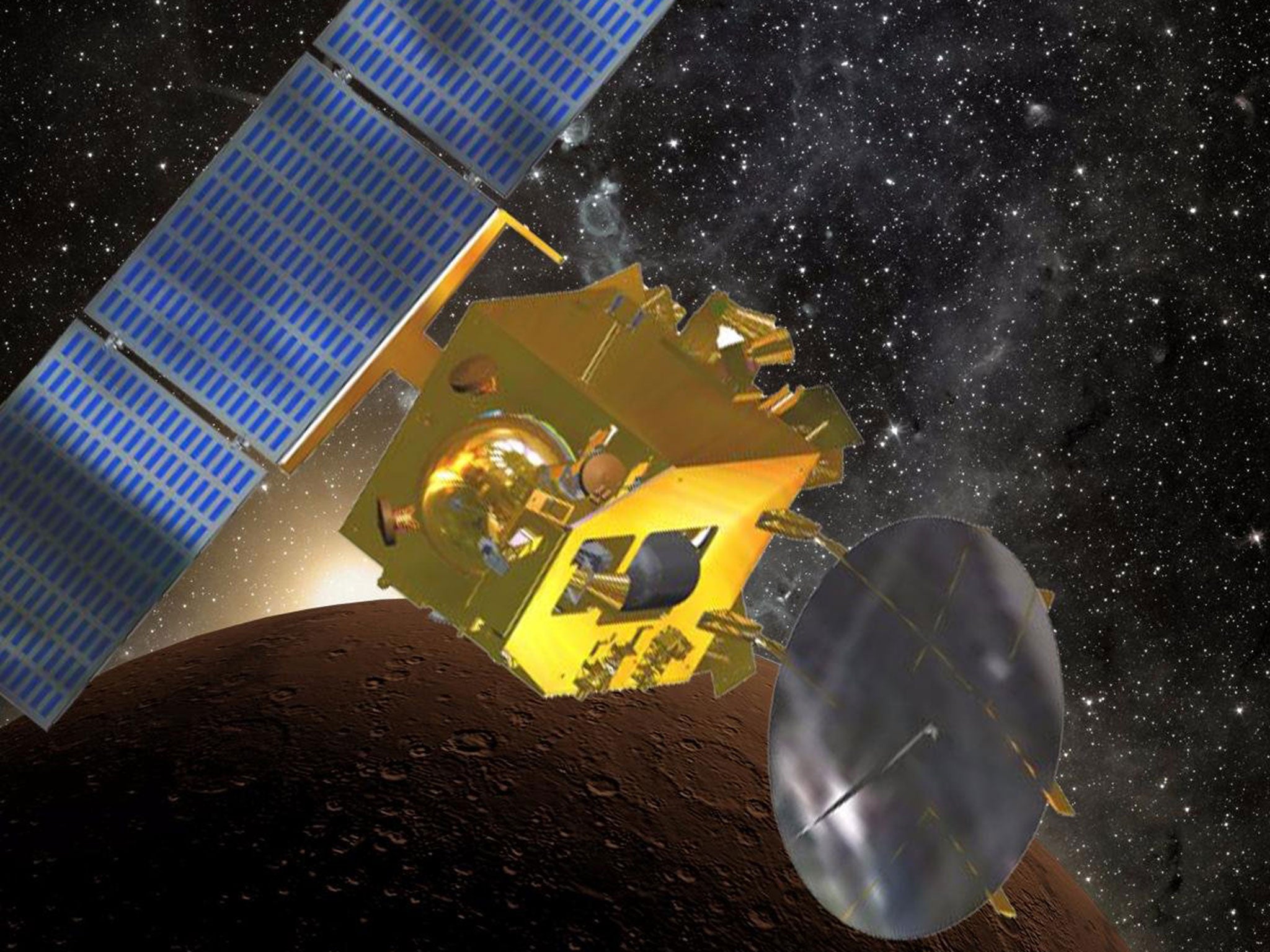Mangalyaan: India's new Mars satellite gets Twitter account hours into orbit
Mangalyaan has already been chatting to NASA's Mars Rover on the surface

Your support helps us to tell the story
From reproductive rights to climate change to Big Tech, The Independent is on the ground when the story is developing. Whether it's investigating the financials of Elon Musk's pro-Trump PAC or producing our latest documentary, 'The A Word', which shines a light on the American women fighting for reproductive rights, we know how important it is to parse out the facts from the messaging.
At such a critical moment in US history, we need reporters on the ground. Your donation allows us to keep sending journalists to speak to both sides of the story.
The Independent is trusted by Americans across the entire political spectrum. And unlike many other quality news outlets, we choose not to lock Americans out of our reporting and analysis with paywalls. We believe quality journalism should be available to everyone, paid for by those who can afford it.
Your support makes all the difference.India’s ground-breaking Mars satellite might have been orbiting the Red Planet for less than a day but it already has its own Twitter account.
The @MarsOrbiter feed was launched by the Indian Space Research Organisation (ISRO) on Wednesday to provide updates on the mission.
Its Twitter bio reads: “India's first mission to Mars. Orbiting the Red Planet since Sep 24, 2014. Explorer. Loves science, photography and long cruises.”
The first tweet included a simulation of the satellite over Mars, with the caption: “What is red, is a planet and is the focus of my orbit?”
Another message greeted @MarsCuriosity, NASA’s mission to explore the planet’s surface which has been gathering data since August 2012.
The Curiosity Rover had sent a friendly “namaste”, congratulating India on its achievement.
The successful launch took the country into the elite club of nations to conduct deep-space exploration and was hailed as a “historic occasion” by Prime Minister Narendra Modi.
“We have gone beyond the boundaries of human enterprise and innovation,” he added in a live broadcast from ISRO’s headquarters.
Scientists broke into wild cheers as the orbiter’s engines manoeuvred the spacecraft into position to observe Mars on Wednesday, more than 10 months after being launched.
The craft will circle Mars for up to six months, carrying five solar-powered instruments to gather data about the planet, its weather systems and chemistry.
Of particular interest will be tests to try and check for the presence of methane, a sign that it may once have borne life.
The mission, which cost around £50 million, is one of the cheapest of its kind and as Mr Modi pointed out earlier this year, was less expensive than the Hollywood space film Gravity.
But the Government’s spending on the Mars Orbiter project, also called Mangalyaan meaning “Mars craft” in Hindi , has been questioned by people pointing out India’s huge social and economic problems and widespread poverty.
NASA, which has conducted 15 successful missions to Mars including a spacecraft that arrived in orbit on Sunday, has two more satellites currently circling the planet, as well as two rovers exploring the surface.
Join our commenting forum
Join thought-provoking conversations, follow other Independent readers and see their replies
Comments